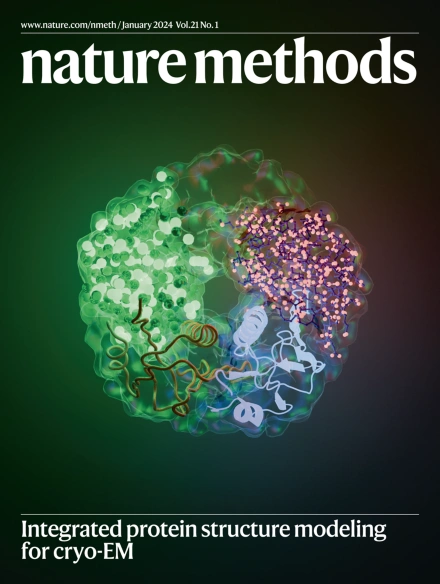Unified mass imaging maps the lipidome of vertebrate development
IF 32.1
1区 生物学
Q1 BIOCHEMICAL RESEARCH METHODS
引用次数: 0
Abstract
Embryo development entails the formation of anatomical structures with distinct biochemical compositions. Compared with the wealth of knowledge on gene regulation, our understanding of metabolic programs operating during embryogenesis is limited. Mass spectrometry imaging (MSI) has the potential to map the distribution of metabolites across embryo development. Here we established uMAIA, an analytical framework for the joint analysis of large MSI datasets, which enables the construction of multidimensional metabolomic atlases. Employing this framework, we mapped the four-dimensional (4D) distribution of over a hundred lipids at micrometric resolution in Danio rerio embryos. We discovered metabolic trajectories that unfold in concert with morphogenesis and revealed spatially organized biochemical coordination overlooked by bulk measurements. Interestingly, lipid mapping revealed unexpected distributions of sphingolipid and triglyceride species, suggesting their involvement in pattern establishment and organ development. Our approach empowers a new generation of whole-organism metabolomic atlases and enables the discovery of spatially organized metabolic circuits. uMAIA is an analytical framework designed to enable the construction of metabolic atlases at high resolution using mass spectrometry imaging data.

统一的质量成像绘制脊椎动物发育的脂质体图。
胚胎发育需要形成具有不同生化成分的解剖结构。与丰富的基因调控知识相比,我们对胚胎发生过程中代谢程序的理解有限。质谱成像(MSI)有潜力绘制代谢物在胚胎发育中的分布。在这里,我们建立了uMAIA,这是一个用于大型MSI数据集联合分析的分析框架,可以构建多维代谢组学图谱。利用这个框架,我们以微米分辨率绘制了达尼奥胚胎中一百多种脂质的四维分布。我们发现代谢轨迹与形态发生一致展开,揭示了空间组织生化协调被批量测量所忽视。有趣的是,脂质图谱揭示了鞘脂和甘油三酯种类的意外分布,表明它们参与了模式建立和器官发育。我们的方法为新一代的全生物体代谢组图谱提供了支持,并能够发现空间组织的代谢回路。
本文章由计算机程序翻译,如有差异,请以英文原文为准。
求助全文
约1分钟内获得全文
求助全文
来源期刊

Nature Methods
生物-生化研究方法
CiteScore
58.70
自引率
1.70%
发文量
326
审稿时长
1 months
期刊介绍:
Nature Methods is a monthly journal that focuses on publishing innovative methods and substantial enhancements to fundamental life sciences research techniques. Geared towards a diverse, interdisciplinary readership of researchers in academia and industry engaged in laboratory work, the journal offers new tools for research and emphasizes the immediate practical significance of the featured work. It publishes primary research papers and reviews recent technical and methodological advancements, with a particular interest in primary methods papers relevant to the biological and biomedical sciences. This includes methods rooted in chemistry with practical applications for studying biological problems.
 求助内容:
求助内容: 应助结果提醒方式:
应助结果提醒方式:


